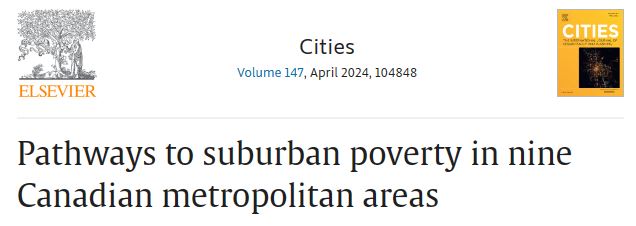Jeff Allen, Steven Farber, Ignacio Tiznado-Aitken
Abstract
The suburbanization of poverty has been a concerning trend in many urban regions. While research has described patterns of suburbanization of poverty at regional and neighbourhood levels, there are open questions about how lower-income households have agglomerated in the suburbs in recent history. Is suburban poverty primarily a result of 1) the movement of low-income residents from central to suburban neighbourhoods (e.g., via processes of gentrification and displacement), 2) migration between Census Metropolitan Areas and the immigration of low-income groups to suburbs, or 3) becoming and remaining poor while staying in the suburbs? The objective of this paper is to describe and quantify the propensity of these predominant individual geographic pathways to suburban poverty. We do so via a cluster analysis of census and land use data to define neighbourhoods as either central or suburban, and then link this categorization to a large-scale panel dataset representing 20 % of tax filers in Canada (from 2006 to 2016). These data allow for analyzing different pathways within the context of large Canadian metropolitan areas, specifically to what extent poverty in suburban neighbourhoods stems from intra-urban residential mobility, immigration, and becoming poor in-place. We find that becoming and remaining poor while staying in the suburbs encompasses a greater proportion of suburban poverty than immigration and centre-to-suburb residential mobility combined. Overall, this research expands our understanding of the sources of suburban poverty while also providing pertinent information to aid preventative policy aimed at reducing suburban poverty in Canada.
